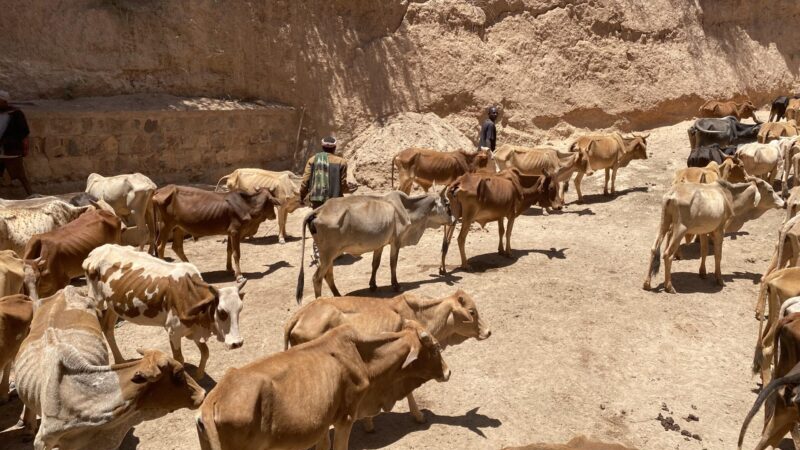Ethiopia knows drought. Parched ground tells the story of the past 40 years with rainy seasons continually failing in the country.
And now 2022 has entered the record books with parts of the country experiencing the most severe example of drought to date.
These conditions can, in part, be explained by the El Niño and La Niña weather systems, which bring severe dry weather to some areas, and flooding to others. Ethiopia’s landscape shifts dramatically between mountainous regions above 3,000m and low-lying desert. Climate change is perfectly placed to exploit this – turbocharging La Niña into regular extreme weather.
Ethiopia also knows political upheaval. A protracted dispute, and conflict, with its neighbour Eritrea ended in 2018, only to be immediately replaced by a brutal civil war in the northern region of Tigray. The war, and ensuing humanitarian crisis, means that the needs of people in drought-affected areas are either going unmet or ignored.
For a country with a long and devastating relationship with dry weather, it’s hard to conceive of the current crisis as being different to others. But as the UN recently reported, drought conditions are now the worst for 40 years, with some communities calling it “the unseen”.
Ethiopia’s vast southern reaches are on the frontline of this crisis.
These areas, bordering Kenya and Somalia, extend for tens of thousands of square miles, covering desert, semi-arid and savanna lands. In a country with a population of over 110 million, these regions are some of the most remote, but more than 20 million people are estimated to be suffering under the drought with a million people in dire need of food assistance.
The people who live in places such as in the Borana zone on the border with Kenya are now heavily reliant on international aid agencies for daily support.
Swiss-based Helvetas runs multiple projects to help communities most impacted by the drought. This support includes providing hay for livestock, installing solar-powered pumps to extract water from deep underground, and using local knowledge to develop a climate warning system.
Fanaye Gebrehiwot, the organisation’s country director, explains that many of its programmes have an in-built “crisis modifier” which allows the agency to keep projects going in areas which are prone to drought. But she adds that “the situation now is more than we can respond to with this modifier. We’ve had to find funds from elsewhere to provide emergency support.”
A recent Helvetas project aims to revive the market conditions for buying and selling livestock in the region. The UN estimates that 4.5 million livestock have so far died due to lack of water and pasture. Millions more are weak and starving. This means traders are unwilling to buy cattle which supports community life.
“Our livestock are our bank; if we lose them, we are nothing. Even if we do business, it is through livestock,” says Tume Jirma, a farmer who reported their experience to Helvetas.
Under these extreme conditions, Helvetas will support the market with small amounts of money to incentivise traders to buy cattle. It also conducts pilots to feed livestock in very poor conditions to get them into better shape. This helps to raise prices and mobilises more money. These schemes have proven successful in supporting communities recover from losing their livelihood, but at present they have only been conducted as small projects and do not address the full scale of the problem.
However, as a test case they could provide an answer to the fallout from Ethiopia’s climate disaster. Gebrehiwot argues that scaling up financial solutions, alongside working with other NGOs in the country, is key to ensuring effectiveness.
This is where the issue of climate compensation, or finance for loss and damage, can play a role. Ethiopia’s latest drought may be the worst in living memory, but it won’t be the last. Millions have been forced to leave their homes and may never return. Addressing loss and damage in Ethiopia could simply be a case of building and expanding on existing solutions, be it solar pumps or better livestock insurance.
The question of loss and damage will take centre stage at the upcoming Cop27 climate negotiations in Egypt. The issue has gained prominence as the world experiences the regular impacts of climate disasters. Asked about what might be missing from these talks, Gebrehiwot insists they need to include the expertise and knowledge of people on the ground.
“Representing the real people who are actually suffering is very important. We must give a voice to the people living through this disaster.”
Adam Wentworth is a freelance writer based in London.
This post was sponsored by Helvetas. See our editorial guidelines for what this means.
